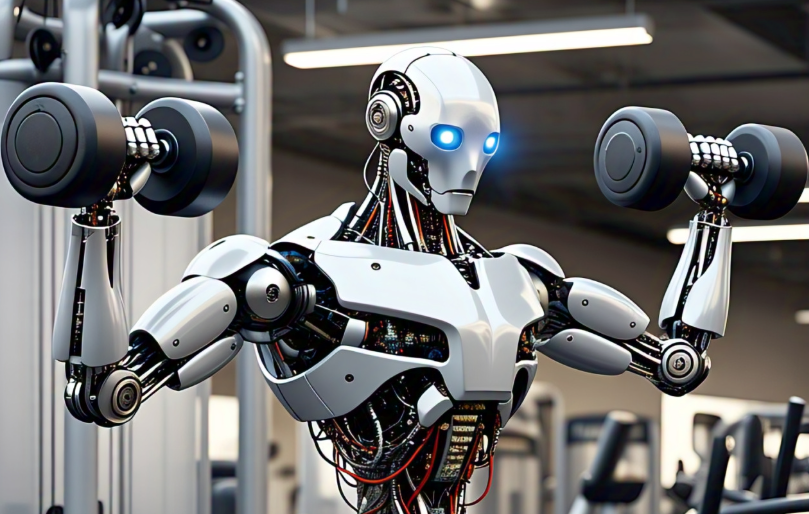 AI
AI
 AI
AI
 AI
AI
OpenAI is looking to experiment with a more “open” strategy, detailing its plans to release its first “open-weights” model to the developer community later this year.
The company has created a feedback form for developers on its website to provide input into the makeup of the new model, which is still under development. It’s asking questions about what open models developers have used in the past, and what features would they like to see in a new open-weight model.
In a post on X, OpenAI Chief Executive Sam Altman revealed a little more, saying that the upcoming open model will come with “reasoning” capabilities, similar to the company’s existing o3-mini model, which takes time to consider its responses to user’s prompts, increasing its accuracy.
The surprise shift in OpenAI’s strategy comes at a time when it has been facing pressure from numerous rivals, who have been pursuing a more open approach to AI development. For instance, the Chinese artificial intelligence startup DeepSeek Ltd.’s DeepSeek R1 model is open-source, and developers are free to experiment with it and make adaptations.
However, it’s important to note that an open-weights model isn’t the same as one that’s fully open-source. Rather, it represents more of a middle ground between open- and closed-source models. In AI, the term “weights” refers to how models learn and establish connections. In their responses, certain connections or characteristics are given greater weight in an attempt to reinforce specific information.
According to the U.S. Federal Trade Commission’s definition, an open-weights model is one that makes its weights transparent and publicly available. So users will be able to see the model’s weights and alter them, meaning they have a way to customize it without having to retrain it on new data.
One advantage of open-weights models is that it’s cheaper for developers to make these adjustments and customize them for different tasks. It’s possible for an organization to upload internal data to an open-weights model and ensure it has the proper weights. Then it will be able to leverage that information when it generates its responses. It’s a lot easier than traditional model fine-tuning.
That said, it’s important to remember that open-weights models aren’t entirely open-source. A true open-source model allows anyone to see its source code and also the data it has been trained on, as well as the weights. With open-weights models, it’s possible to see the way it makes its connections, but the underlying code and its training data is still hidden. There may also be licensing conditions that restrict how it’s used.
Given that OpenAI, contrary to its name, is one of the most secretive AI companies in the business – not disclosing the information ChatGPT was trained on, for example – the open-weights model is unlikely to reveal many of its secrets.
Still, OpenAI clearly considers that a more open approach is necessary. The company, which today bagged $40 billion in new funding, is involved in a heated race with its competitors, which are scrambling to develop new varieties of AI models. The open-weights model will likely compete with Meta Platforms Inc.’s Llama family, which are also pitched as being open-source, although they don’t meet the traditional definition either.
DeepSeek is another rival, and its newest V3 model is currently believed to be one of the most powerful open-weights models available. It’s a threat to OpenAI because not only does it match and sometimes even surpass the capabilities of its best proprietary models, but it’s also much cheaper for businesses to use and customize.
Holger Mueller of Constellation Research Inc. said the fact that OpenAI is returning to its early, more open roots suggests that it sees a lot of merit in such an approach. It’s also an admission by the company that it cannot easily build out-of-the-box, packaged AI systems for different industries, so instead of that it’s providing companies with the tools to do so themselves.
“There’s still the question of who will make the effort to create and test the weights, as this is not a trivial task and likely too much even for a large enterprise to take on by itself,” the analyst said. “But such a model can definitely become a new revenue stream for larger software vendors and systems integrators.”
OpenAI hasn’t said when it expects to launch its new open-weights model, which will be its first since it debuted GPT-2 back in February 2019.
On X, Altman explained that the company needs to evaluate the new model according to its “preparedness framework,” just as it does for any of its proprietary models. “And we will do extra work given that we know this model will be modified post-release…. We’re excited to see what developers build and how large companies and governments use it where they prefer to run a model themselves.”
Support our mission to keep content open and free by engaging with theCUBE community. Join theCUBE’s Alumni Trust Network, where technology leaders connect, share intelligence and create opportunities.
Founded by tech visionaries John Furrier and Dave Vellante, SiliconANGLE Media has built a dynamic ecosystem of industry-leading digital media brands that reach 15+ million elite tech professionals. Our new proprietary theCUBE AI Video Cloud is breaking ground in audience interaction, leveraging theCUBEai.com neural network to help technology companies make data-driven decisions and stay at the forefront of industry conversations.